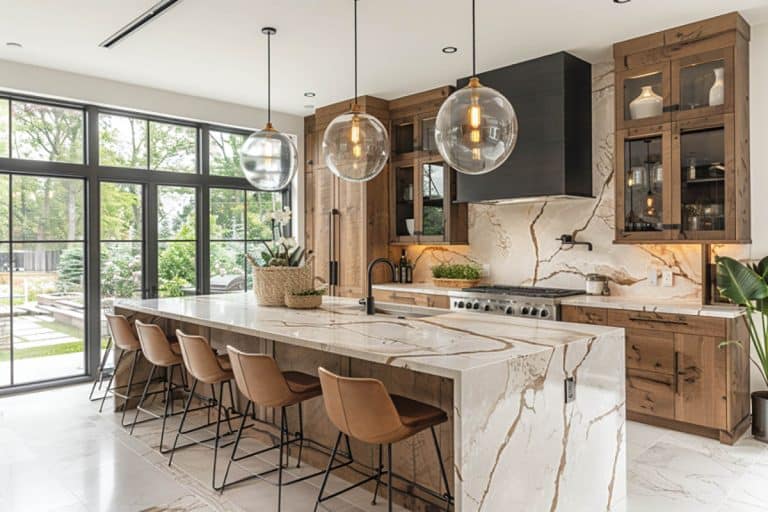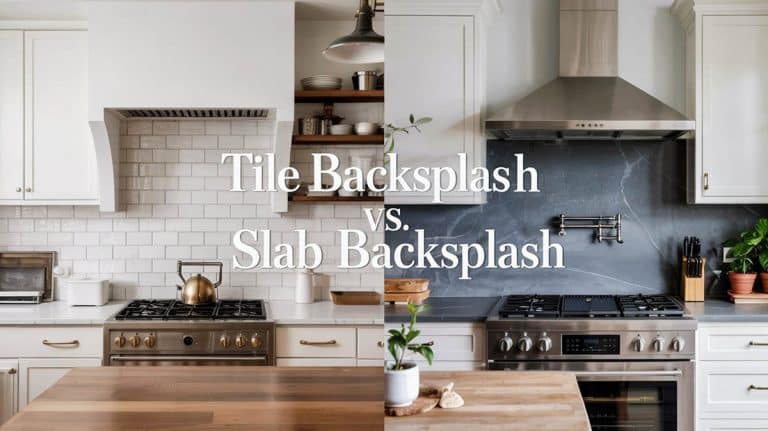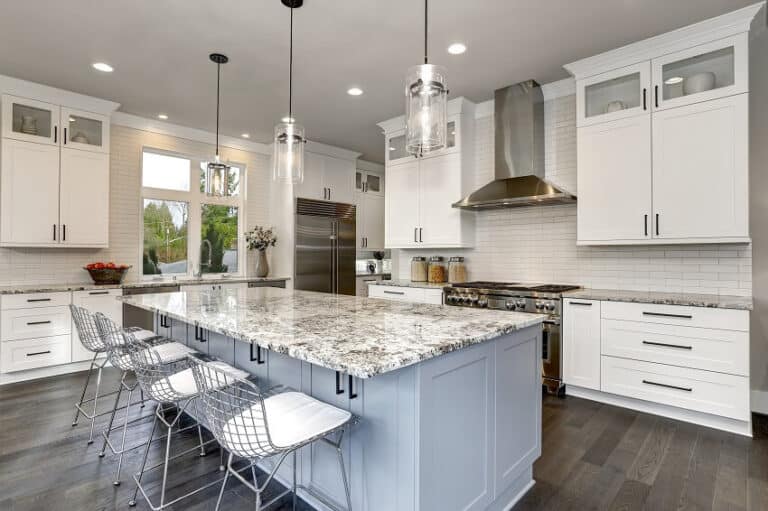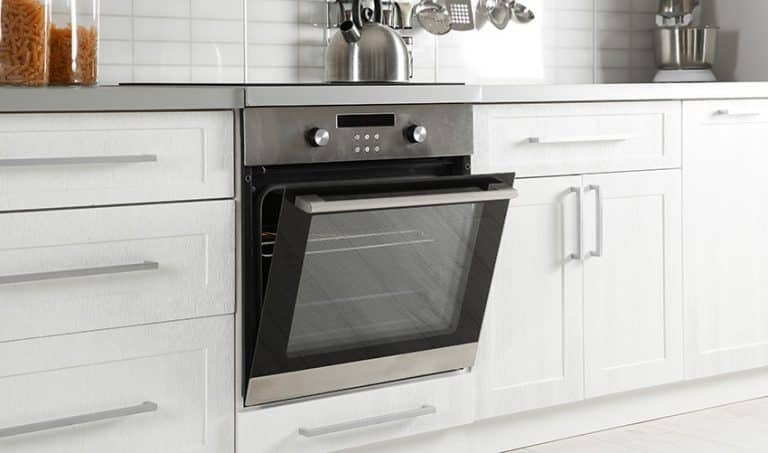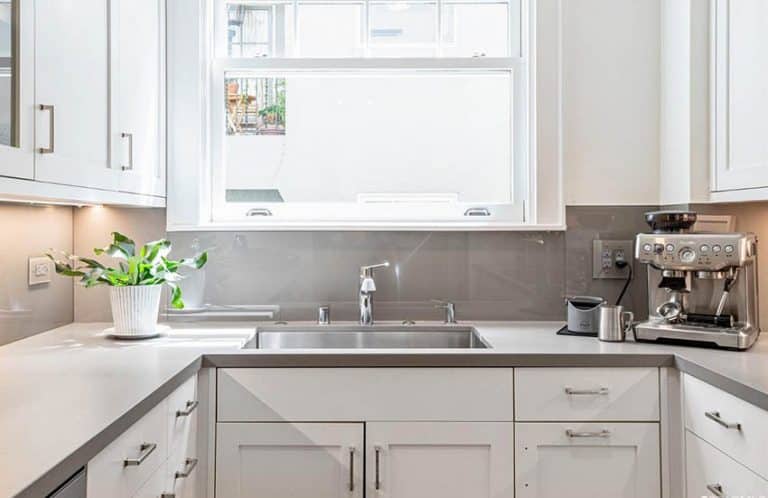Design Tips For A Brick Kitchen Island
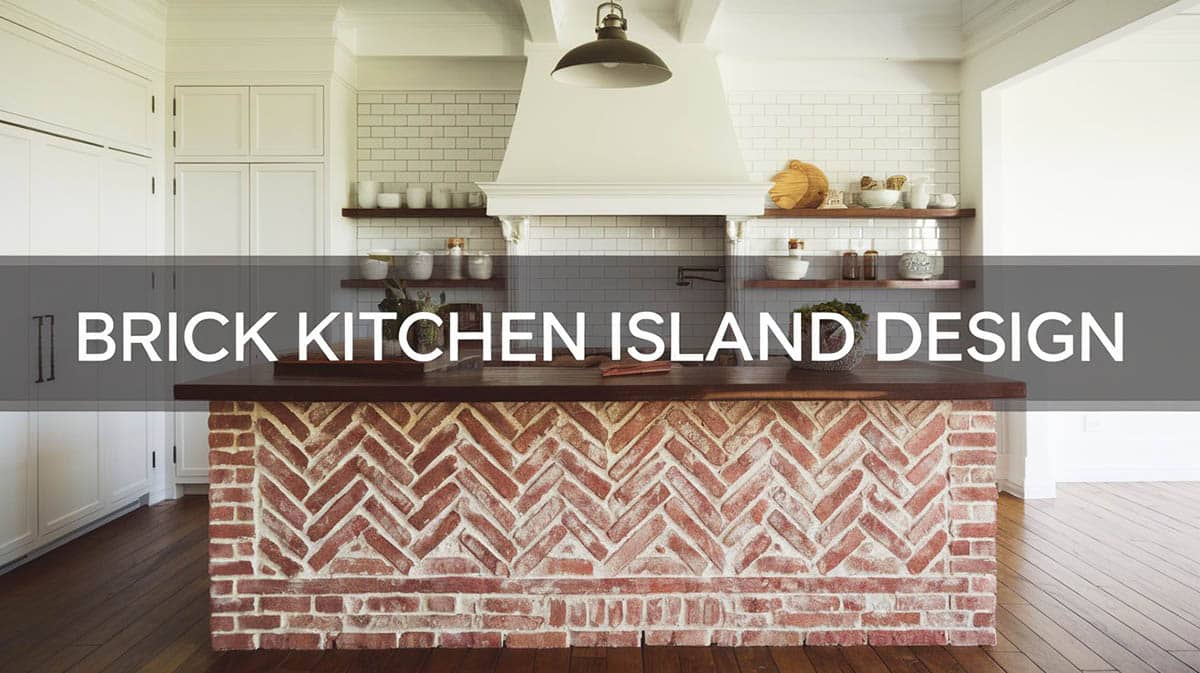
Bricks are always a welcome feature in any design style. They add more personality to the spaces, giving them a warm, rustic feel and adding a layer of texture that will benefit the overall look of kitchens, especially modern spaces. While masonry elements are often found on wall applications, you can use them on kitchen island bases with real brick or faux materials. To match the white theme of the design, the base for the brick kitchen island above uses lime-washed cladding. The lime wash softens the strong orange tones of the bricks and also adds to the texture of the surface. The result perfectly matches and blends with the existing finishes of the kitchen.
Brick Kitchen Island Designs
Depending on the look you are going for, there are many types of bricks you can choose from. Color and texture vary depending on its place of origin, materials, and production methods. Here are some of the common types of bricks:
- Clay brick – this is the most common brick, usually orange/red in color.
- Sand Lime bricks – these are usually white because of the sand used for this material.
- Fly ash bricks – these are made from fly ash, cement, and sand/stone dust.
- Concrete bricks – made from a mixture of cement and aggregate (typically sand.)
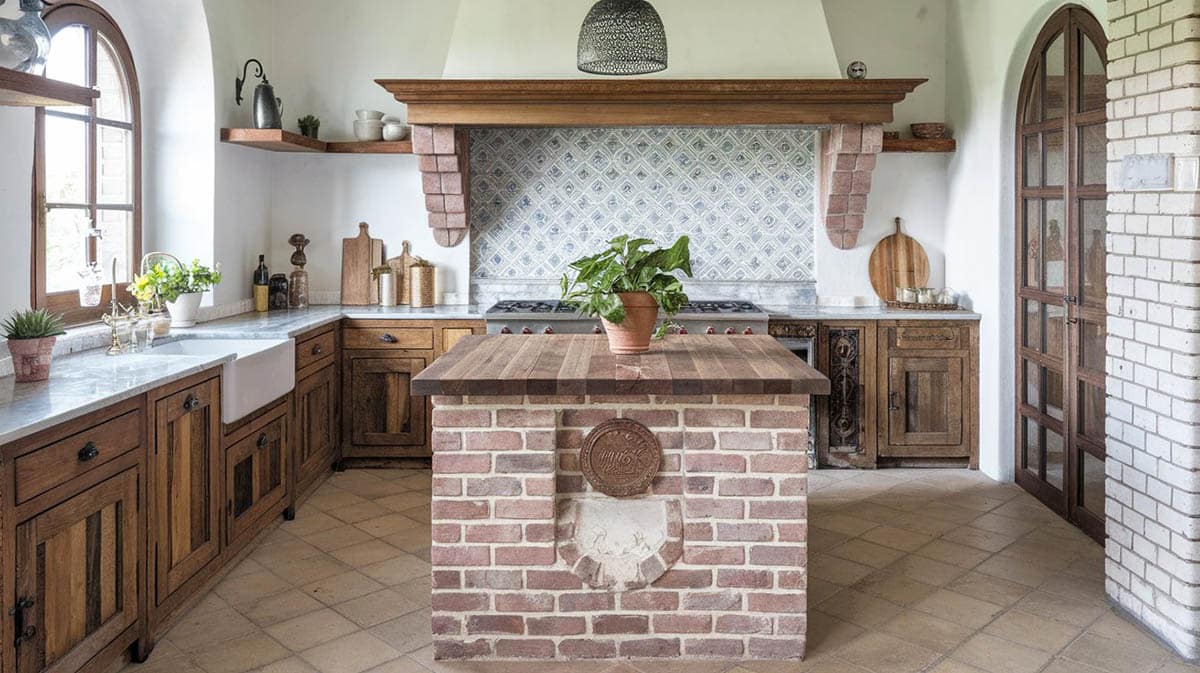
There are also many finishing techniques used on brick kitchen islands to help them match the look you need for your space. Some of the popular ones are:
- Painting – painting over the bricks to add a color wash or completely cover them while keeping their original texture and pattern.
- Lime-washing – this adds a white wash/tint effect to your surfaces, but compared to paint, this is much more durable and discourages molds from forming on its surface. This also produces a more natural texture.
- Plastering – also known as “wet plastering”- adds a layer of plaster to the surface and is usually used to create a “weathered” or “chipped” effect.
Aside from using actual bricks, concrete tiles, and foam boards with similar designs are also great alternatives. They could be cheaper (depending on where you are), and are easier to install. These are especially handy if you already have an existing cabinetry base and just want to add brick color/texture quickly and efficiently.
Feel free to experiment with the different materials and finishing techniques to achieve the look you want! Below are some examples of how you can apply bricks to your kitchen islands.
This kitchen island uses the same bricks as those used on the walls to create a uniform look. The island’s base sides are made from masonry for stability, but the center part of the island is still made from wood to provide storage space. The dark red bricks add a nice texture to the clean, contemporary aesthetic of the space and give it a little more zing. The brick wall living room features the same style for a cohesive design.
If you have an existing kitchen island, you can opt to add a simple brick cladding to the facade of the island to add a little color and texture to the surface. This helps add color to all-white cabinetry while maintaining a natural, muted look that still keeps its contemporary appeal.
For more related designs, visit our gallery of brick flooring ideas.

